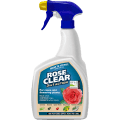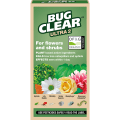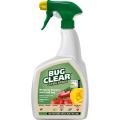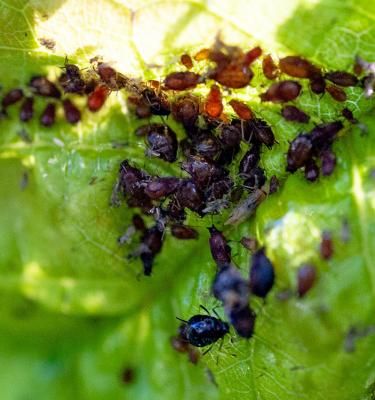

How to Identify, Treat & Control Aphid Infestations
What are aphids?
Aphids are small insects which feed on plant sap using their needle-like mouthparts. They are sometimes called greenfly (green aphids) or blackfly (black aphids). There are more than 500 aphid species in Britain. Some aphids feed on only one or two species of plant, but others can be found on a wide range of plants. Most types of plant can be affected.
In the aphid life cycle the insect looks similar at each stage, just getting larger as it reaches maturity. For most of the year aphids give birth to live young (aphid larvae) which during warmer weather develop into adult insects in as little as seven days. Although a small colony of aphids isn’t a threat to a healthy plant, when they multiply very rapidly a heavy aphid infestation can weaken a plant. Aphids lay overwintering eggs in the autumn so as to survive the colder months of the year.
Aphid’s eggs are often laid in a woody tree or shrub and when the eggs hatch in the spring, the aphids feed on the soft young leaves. When the leaves become older and tougher, the aphid grows wings and moves to another plant for the summer, usually a non-woody plant with soft foliage.
How to identify aphids
Aphids are little bugs about 2mm long. They are usually green or black but some types of aphid are yellow, pink, white or mottled. Flightless when young, aphids develop wings in the later stages of their life cycle. You often see clusters of aphids feeding at the growing tip of young plants.
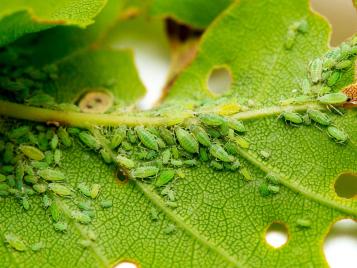
Aphid damage and symptoms
Aphids feed by sucking the sap of plants, weakening them and reducing their growth. They can also transmit virus diseases to the plant. Affected plant leaves or stems can become curled or distorted in shape.
Aphid colonies usually gather underneath leaves, on flowers or at growth points. As they suck the sap, they excrete a sugary honeydew onto the leaves below, which develop a shiny glaze. Although ants do not eat aphids they sometimes collect the honeydew they secrete. In damp conditions, sooty moulds grow on the honeydew, forming a black or greyish green deposit on the leaves. This is not only unsightly, but will gradually deprive the leaf of light and might eventually kill the plant.
Aphids shed their skins as they grow larger. The skins gather on the leaf surfaces below where they are feeding and form a whitish dust, often the first sign of an aphid infestation.
Aphid control & treatment
How can you get rid of aphids? There are many methods of aphid control. Here we’ve listed a few different aphid pest controls, ranging from cultural and biological to chemical.
- Tackle individual aphids on plants and small colonies by simply squashing them or wiping them off the plant with a damp cloth or small watercolour paint brush.
- In the greenhouse, you can introduce a biological treatment to combat aphids such as a midge whose larvae eat aphids (Aphiodoletes aphidomyza) or a type of parasitic wasp whose larvae develop inside the aphids’ bodies (Aphidius).
- Ladybirds and their larvae eat aphids. You can attract them into your garden by planting English marigolds.
- Where these natural and biological controls are not practical, you can control aphids by using an aphid spray on affected plants such as a contact insecticide which will control most aphids. As its name suggests, a contact insecticide kills only the insect pests it comes into contact with.
- Some aphids, such as woolly aphid, have a protective covering that contact insecticides cannot penetrate. This means they need to be sprayed with a systemic insecticide. Systemic insecticides are absorbed into the plant, and protects against further aphid symptoms for up to three weeks.
Before you treat aphids on fruit and vegetables, always check that the insecticide is approved for use on edible crops. To protect bees and pollinating insects do not apply to plants when in flower. Do not use where bees are actively foraging. Do not apply when flowering weeds are present.
Some plants require different aphid treatments
- Aphids on roses: try growing thyme near your roses because its strong scent deters black aphids, known as blackfly – one of the types of aphids that feed on roses. You can also get rid of aphids on roses with an insecticide designed for roses.
- Aphids on chilli plants and tomato plants: these plants often attract aphids if they are grown indoors or in a greenhouse. As soon as you see them, wipe them off with a damp cloth or small paint brush.
- Aphids on trees: aphids sometimes lay their eggs on fruit trees such as cherry trees over the winter. Aphid eggs can be destroyed by using a plant oil winter wash on a dry mild day from November until early February.
- Aphids on runner beans and French beans: lure aphids away from your beans by planting nasturtiums nearby.
- Aphids treatment for indoor plants: keep an eye out for signs of aphids on your indoor plants such as your basil plants and squash them between your finger and thumb or wipe them off as described before.
How to prevent Aphids
One way to prevent aphids damaging precious plants in your garden is to plant ‘companion’ plants which either put the aphids off completely or attract aphid predators which can keep down an aphid infestation. Here are some examples to try:

